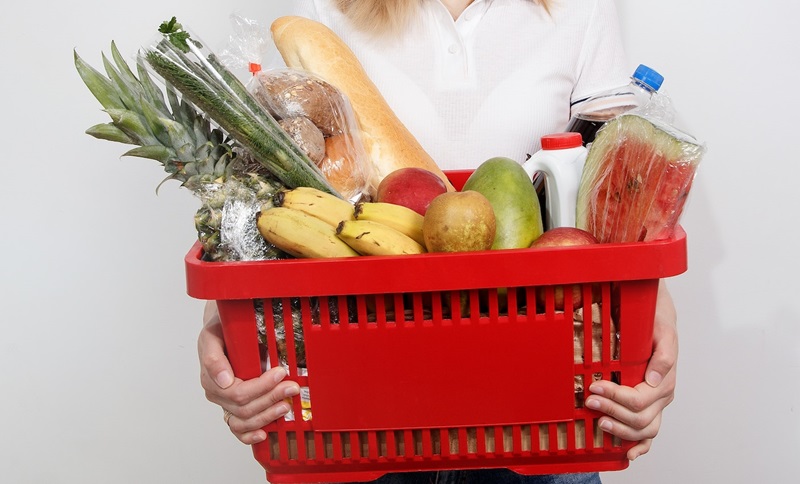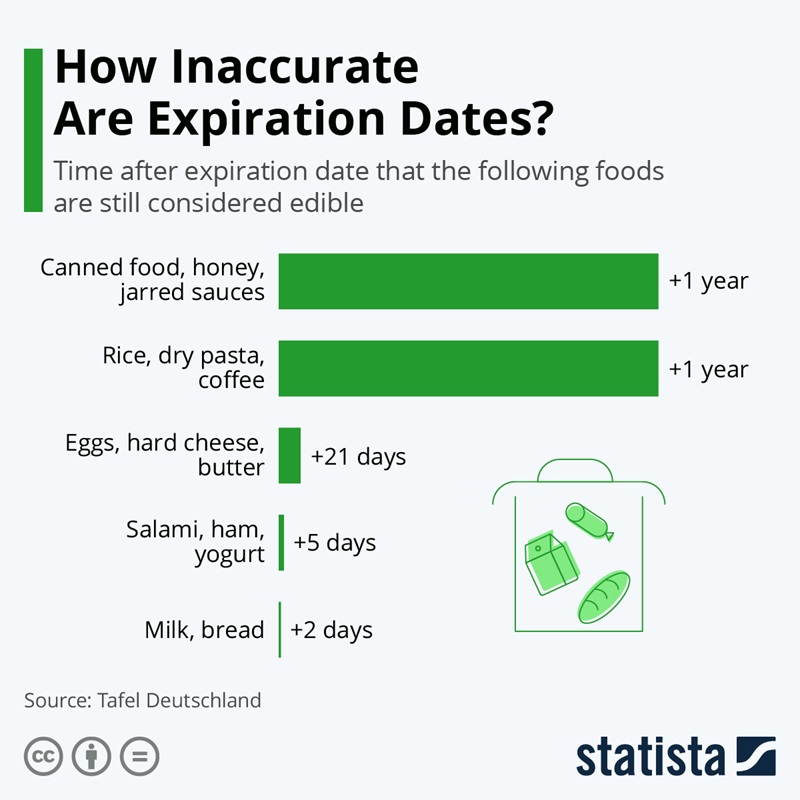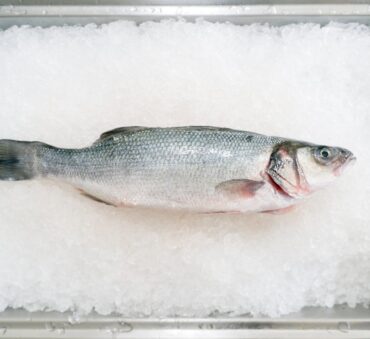In the United States, 30-40% of the food supply is wasted. And unfortunately, a huge contributor to this crisis is the simple misunderstanding of expiration dates.
With the spotlight on the global food packaging industry to address such problems, many advances have been made to extend the shelf life and improve the safety of our favorite foods.
But if improvements in packaging allow us to process and preserve food for longer periods of time, why is food waste still a problem?
The unfortunate reality is that the efforts made by the food packaging industry have generated even more confusion, leading to increased food waste.
In this article, we’ll explore the connection between expiration dates and food waste, the amount of expiration date food waste being generated today, and how to read expiration labels.
Key Takeaways
- In the United States, 30-40% of the food supply is wasted, with a huge contributor to the waste being the misunderstanding of expiration dates.
- There is no uniform system that manufacturers are required to use, meaning there’s a large variation in which type of date they can list on their food product, how to determine the expiration date, or if they even need to list a date on their product at all.
- Expiration date food waste is generated at the consumer level, manufacturer level, and governmental level, meaning action should be taken at all levels to reduce waste.
- “Sell-by,” “best-by/best if you used by,” “expiration date,” and “freshest by” all have different meanings that can guide consumers to reduce food waste due to expiration dates.
- We can address expiration dates and food waste by educating the public, standardizing food dating and labeling formats, and improving the accuracy of shelf-life dates.
What Is the Food Expiration Date and Labeling System?
We’ve all done it—we check for a date on our product and immediately throw it away if the date exceeds the current date. And while dates on packages are a great guide, the labeling system isn’t as cut and dry as many think.
Food product dating is used to tell consumers the time frame in which the food maintains the best quality. However, labels are not science-based, meaning manufacturers have the freedom to choose how they create food expiration dates.
Two types of product dating can be used: open dating and closed dating. “Open dating” is when manufacturers provide a calendar date to guide consumers, using phrases such as “sell by,” “best by,” and “use by.”
“Close dating” is a system used by manufacturers and retailers to track the freshness and shelf life of food products without providing a specific date visible to consumers. Manufacturers use a series of letters and/or numbers to identify the time and date of production.
And contrary to popular belief, product dating is not required by federal regulations (except for infant formula). So although manufacturers and retailers consider multiple factors to determine how long a product will maintain its quality, the secret to reducing food waste due to expiration dates is helping consumers understand how to inspect food before throwing it away and knowing how to read various expiration labels properly (we’ll discuss this more below).
The Problem with Expiration Dates and Food Waste
Modern-day food manufacturing has made many advances to keep food out of landfills, but issues with expiration date food waste are still generated at the consumer level, manufacturer level, and governmental level.
Consumer Level
43% of waste in the United States comes from households, meaning it’s time for consumers to consider their own household habits. The reality is that many consumers have fallen into the accidental pattern of prioritizing the wrong things when it comes to food.
But what habits have we normalized (without even realizing it)?
To start, many Americans have gotten into the habit of shopping at stores with the most abundance of products, expecting to see shelves fully stocked and crates filled to the top. By overstocking, stores can sell more and retain more customers, and, alternatively, customers are pleased with the plethora of options.
The downside? Overstocking means that a large portion of it ends up in the trash, both in our homes and at the store.
Another huge problem at the consumer level is that many Americans have been programmed to avoid products that are about to “expire.” Instead of a ‘we should consume it before it expires’ mindset, many would rather purchase products that have a further expiration date. And while the most logical way to reduce waste is to purchase and consume products with near expiration dates, consumers have been trained to think the other way around, leaving perfectly good products to be thrown in the trash.
Instead of prioritizing aesthetically “pretty” produce and buying in bulk even if we can’t consume it all, consumers should be more aware of expiration dates and food waste and do our part to purchase more consciously.

Manufacturer Level
Some of the factors that manufacturers use to determine quality dates include the length of time and the temperature at which a food is held during distribution and offered for sale, the characteristics of the food, and the type of packaging used. However, there is no uniform system that manufacturers are required to use.
This means there’s a large variation in which type of date they can list on their food product, how to determine the expiration date, or if they even need to list a date on their product at all. This is one of the reasons why expiration dates are often misinterpreted by consumers.
At the manufacturer level, one of the ways to reduce expired food waste in America is through better communication with consumers. By improving the current system and making a more standard approach to determining quality dates, consumers can better understand how to read labels.
Governmental Level
A previous Harvard study claims that standard date labeling language is needed to reduce confusion and unnecessary waste, with the potential to divert an estimated 398,000 tons of food waste and provide the U.S. with a total economic value of $1.8 billion.
So, why can’t the government just fix the problem?
Since this study, many states have passed their own laws to address the problem, but it’s believed that it would be more beneficial to create one federal standard rather than on a state-by-state basis.
The problem is that Congress is making very slow progress towards creating a standardized system that would act as a long-term solution.
How Much Food Is Wasted Due to Expiration Dates?
Expiration date food waste has led to food and calorie loss, financial loss, and an across-the-board negative impact on the environment. To get an idea of the overall impact it’s having on the United States, let’s explore these 3 areas in more detail.
Food and Calorie Loss
By calculating the amount of calories in food waste, we can better understand how this crisis is fueling food insecurity around the world.
Research shows that U.S. retailers toss about 43 billion pounds of food, while consumers waste an additional 90 billion. This translates to around 31% of the available food supply in the U.S. being thrown away, which amounts to 1,200 calories per person per day.
Another study from 2012 found that food wasted each day contained upwards of 1.8 billion grams of dietary fiber, which is comparable to the full recommended intake of dietary fiber for 73.6 million adult women. American women under-consumed dietary fiber by 8.9 grams per day in 2012. This study found that the daily amount of wasted dietary fiber is equivalent to the amount needed to fill this nutritional gap for as many as 206.6 million adult women.
Financial Loss
Food waste is responsible for massive financial losses, both at the retail and consumer levels.
In 2022, U.S. consumers spent an average of 11.3 percent of their disposable personal income on food, yet a large percentage of our food is still being thrown away. In fact, one study explains that 31% of the available food supply at the retail and consumer levels is never consumed.
In the United States alone, 40% of food is lost or wasted, annually costing an estimated $218 billion, or 1.3% of GDP.
Environmental Impact
The environmental impact of food waste is huge, with water waste being one of the notable repercussions. Food waste ends up wasting nearly a quarter of our water supply in the form of uneaten food, or over $172 billion in wasted water.
The relationship between food waste and climate change also can’t be ignored, as food waste landfill methane is produced when food decomposes in landfills. But how does food waste in landfills contribute to climate change?
Methane, a powerful greenhouse gas that has powerful heat-trapping properties, is released when food waste undergoes the unique decaying process that it’s exposed to in landfills. So much so that it acts as the third-largest source of methane emissions from human activities in the United States.
Some of the ways that food waste and climate change are related are that food waste contributes to global warming, energy and resource waste, deforestation and biodiversity loss, wasted fertilizers and pesticides, and loss of food security.

How to Read Expiration Dates to Avoid Confusion?
So how do you read food waste expiration dates?
Let’s take a look at what the different dates mean and whether or not you can still consume each product after that date passes.
Sell-by Date
Many refrigerated items have sell-by dates listed. This date is used to show how long stores should keep the products on their shelves, which helps stores control their stock. Although you can eat products after their sell-by date, consumers should be aware of how long different products can still be consumed. For instance, milk is good for about a week after its sell-by date, while eggs can be eaten 3 to 5 weeks after.
Best-by/Best if You Used by Date
This date represents how long a product maintains the best flavor and quality. What’s important for consumers to know is that food can often be consumed after this date, though it may start to lose its quality.
Expiration Date
An expiration date is the last day that a product should be consumed. Expiration dates are often used on products such as infant formula, vitamins, medications, baby food, and baking powder, among others. Expiration dates are typically used when manufacturers decide that products may not function the same after the date listed.
Freshest by/Quality Assurance Date
A freshest-by date shows the period during which a food product maintains peak quality. After that date, the quality gradually declines. Like best-by dates, proper storage improves the chances that a product can be eaten well after the date passes.
Here’s a food safety food expiration dates guidelines chart for a quick reference.
| Sell-by date | Guideline for retailers to know when to remove a product from their shelves. |
| Best-by/best if you used by date | Suggests the recommended period for optimal quality or flavor. |
| Expiration date | Indicates when a product is no longer safe to consume. |
| Freshest by/quality assurance date | Marks when a product is at its highest level of freshness or quality. |
How to Reduce Expiration Date Food Waste
Reducing food waste due to expiration dates should be a priority for businesses and households alike. There are multiple ways to support this movement:
Educating the Public
As we’ve seen, there’s a ton of confusion regarding expiration dates and food waste, meaning one of the best ways to handle this problem is by educating consumers. While there are currently commercial campaigns and targeted outreach programs, more efforts should be made so that the public is more aware of how to read expiration dates.
This will empower people to throw away less food and encourage them to be more aware of their eating and shopping habits. A big way to make people aware is to standardize labeling, which brings us to our next point.
Standardizing the Food Dating/Labeling Formats
Implementing standardized date labeling formats across the food industry, such as “use-by” for safety and “best if used by” for quality, can help clarify the meaning of date labels and reduce confusion among consumers. Since states create their own laws and manufacturers use their own criteria on how to label products, there is no clear system for consumers to use.
The hope is that one day the government will create a standardized food dating and labeling format, which will in turn help educate consumers.
Storing Food Properly
As mentioned, many products can still be consumed after their “best-by” or “sell-by” date, but products must be stored properly. Proper food storage practices, such as refrigerating perishables promptly, freezing items when appropriate, and using airtight containers, can prolong the shelf life of food and prevent it from spoiling prematurely, regardless of the date on the label.
Consumers should also be aware of how long products are expected to last, depending on how they’re stored. Resources like this cold storage chart are great indicators of how long products can be stored before expiring.
Improving the Accuracy of Shelf-Life Dates
The best way to improve accuracy is by standardizing the food dating and labeling formats so that all manufacturers are required to use the same guidelines and specifications. However, since that is more of a long-term solution, we can start with better collaboration between food manufacturers, government agencies, and scientific experts.

This will lead to more accurate shelf-life assessments, ensuring that date labels align with a product’s actual freshness and safety, ultimately reducing unnecessary food waste.
How to Dispose of Food Waste Caused by Expiration Dates
Understanding how to handle expiration date food waste in an environmentally friendly way is a big part of keeping food out of landfills. Thanks to advances in food waste technology, businesses and individuals now have a reliable way to handle quality control, food manufacturing, and processing.
One of the innovative approaches utilized is the transformation of food waste to energy. This method involves turning organic waste into usable forms of energy to divert food waste from landfills. Some of the methods that make this possible include anaerobic digestion, thermal conversion, and hydrothermal liquefaction.
Food waste upcycling is another great approach that refers to the process of transforming food waste into new products that have a higher value or greater usefulness. One of the ways this can be done is through composting organic food waste, a method that uses microorganisms to break down organic waste into compost. It can then be used to enhance the growth of plants and crops in gardens, landscaping, and agriculture.
Other upcycling strategies include converting food waste to animal feed, anaerobic digestion of food waste, and using household food waste to create new dishes.
Federal Laws and Regulations of Food Date Labeling
There are currently no federal regulations related to date labels on food products, aside from infant formula. Instead, states create their own rules, generating confusion about how to read labels. However, there has been recent discussion over how to tackle the issue of expiration dates and food waste.
In May 2023, the Food Date Labeling Act was introduced to the Senate and the House to standardize food date labels across the U.S. This act would establish a dual label system, eliminate state laws that ban the sale or donation of food past the quality date, and instruct the USDA and FDA to work together to educate consumers and food companies about the meaning of new labels. While this act is still in the making, it would have a huge impact on the food waste crisis.
In addition, states are creating their own laws to address food waste management. Many states are implementing initiatives and food waste laws to reduce the amount of food waste generated by businesses and households.
Conclusion
Expired food waste has become a huge problem throughout the United States, meaning consumers, manufacturers, and the government must work together to create a solution.
Shapiro does its part by offering organic food waste recycling services so that businesses and consumers alike have a reliable and environmentally friendly way to manage waste. Its nationwide network of qualified partners assists in the collection, transportation, treatment, and recycling of all organic materials.



